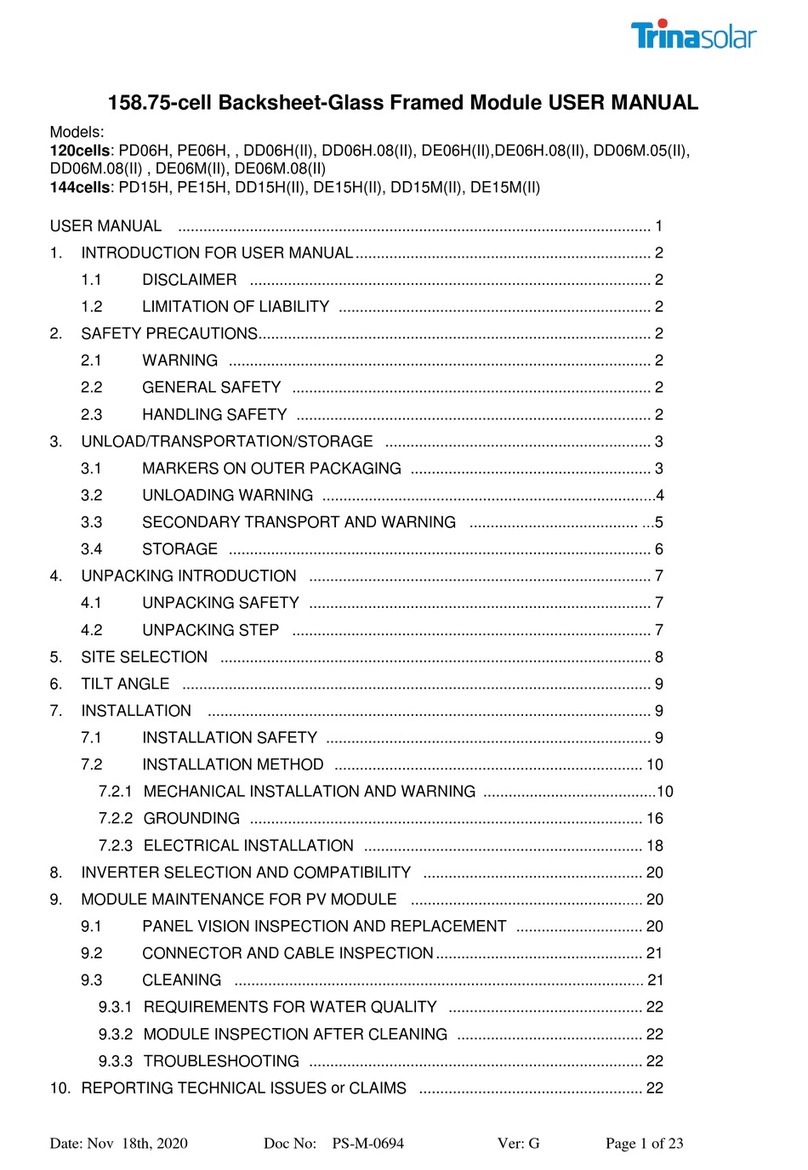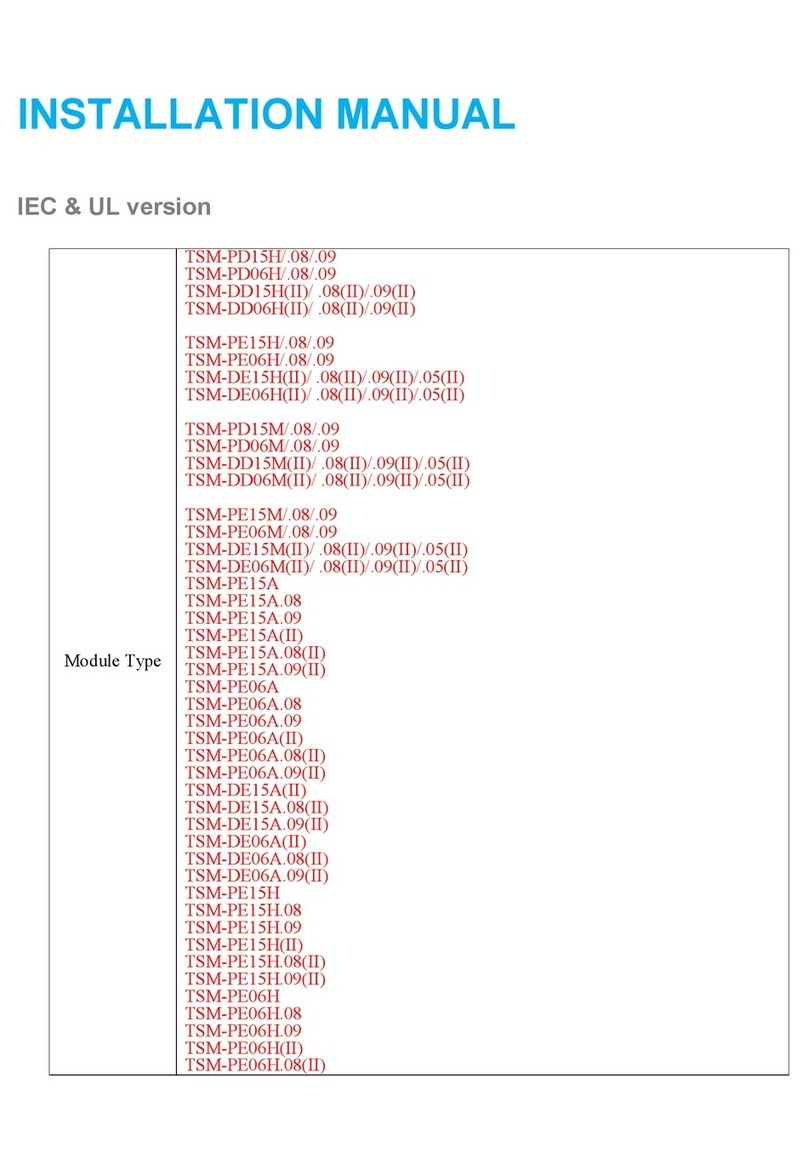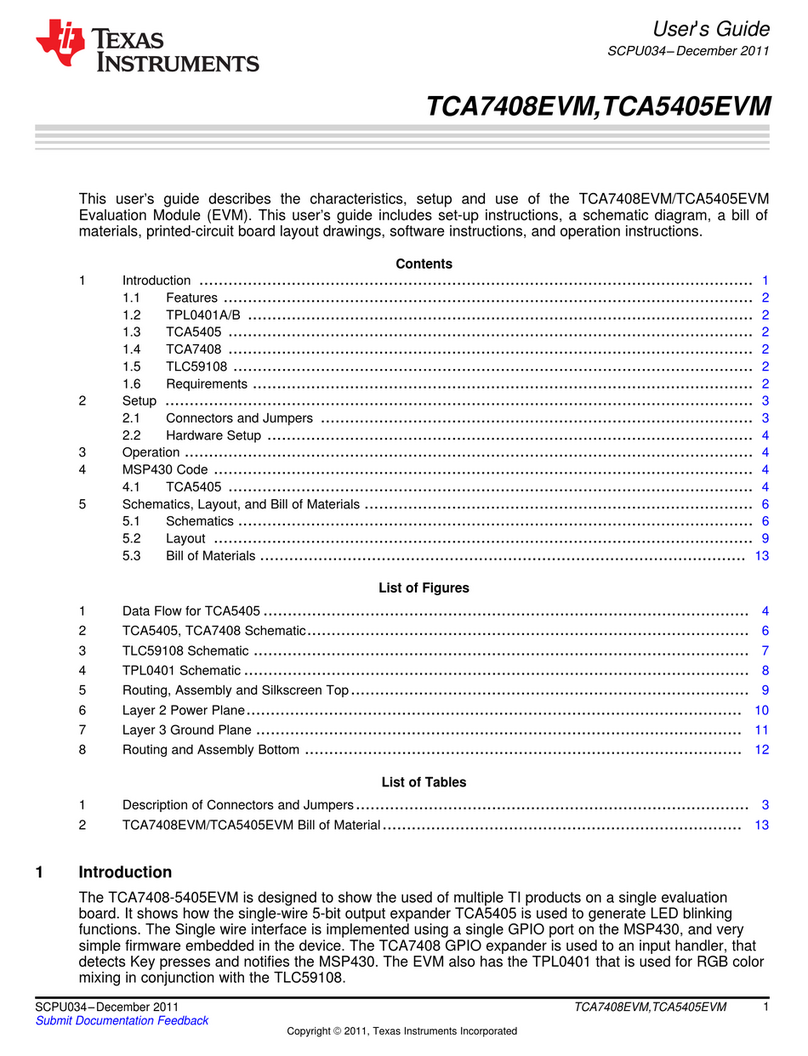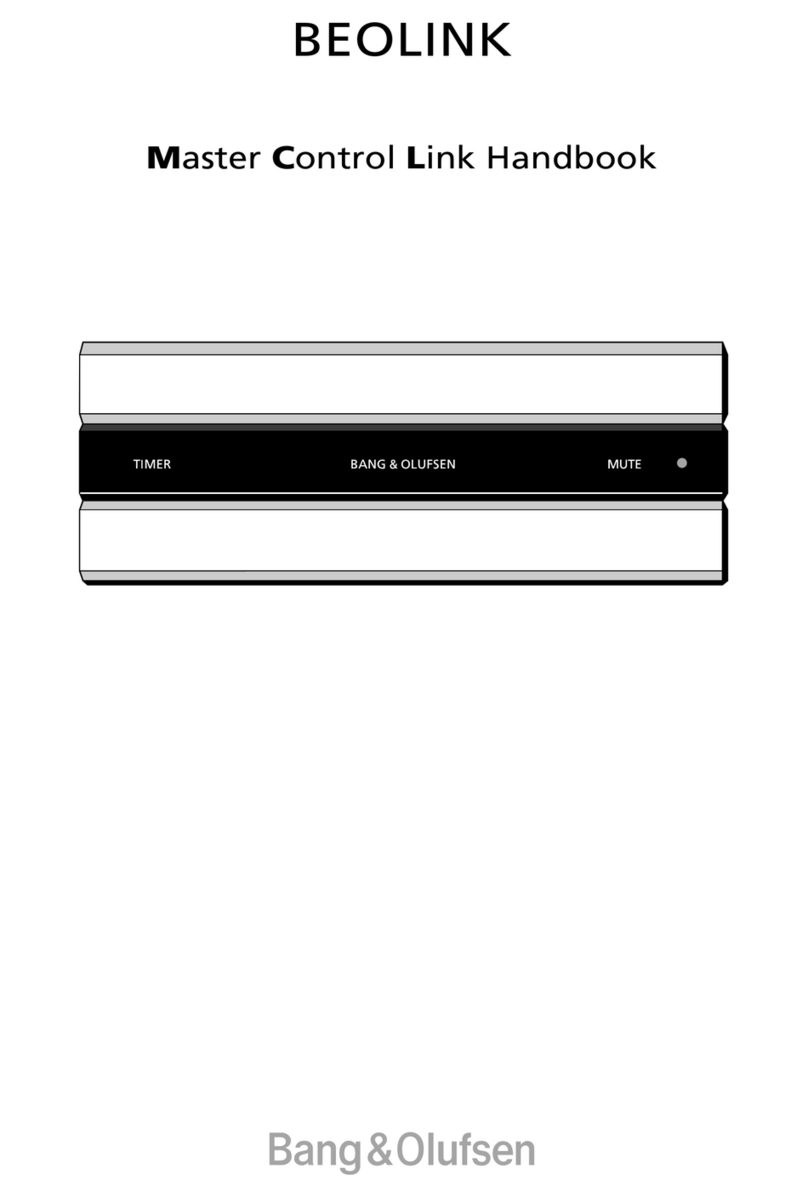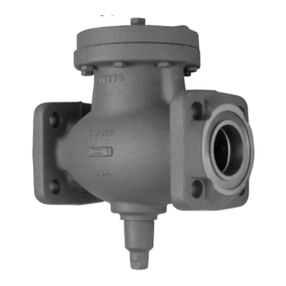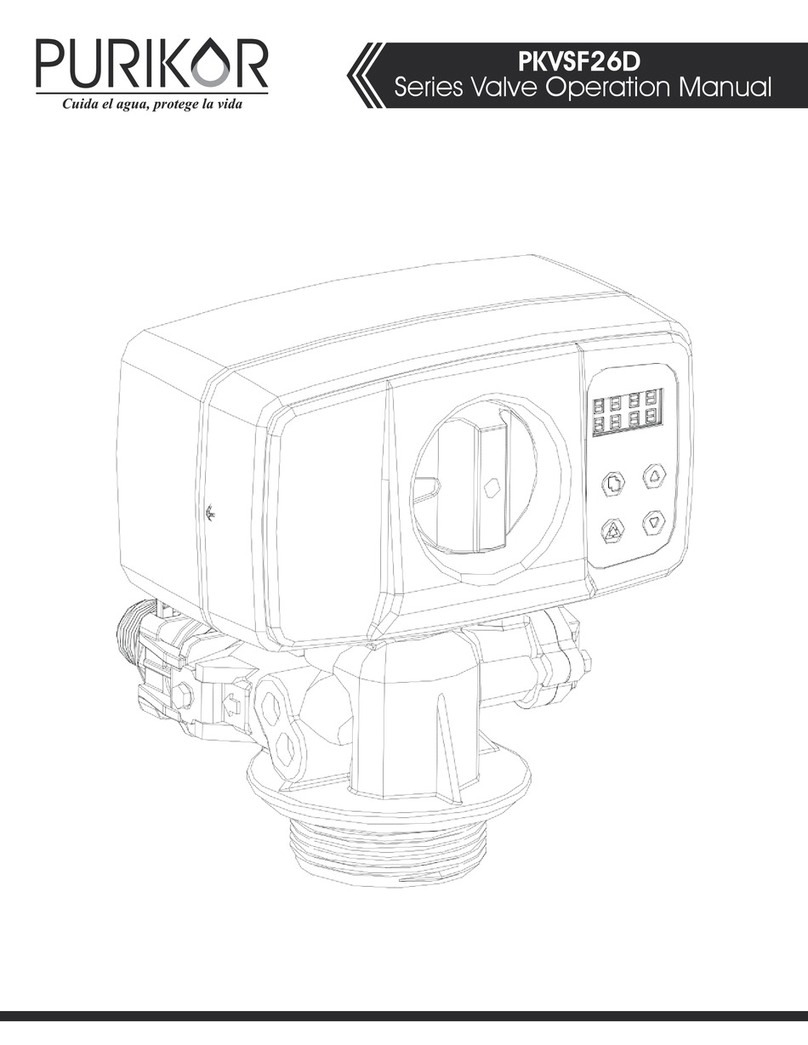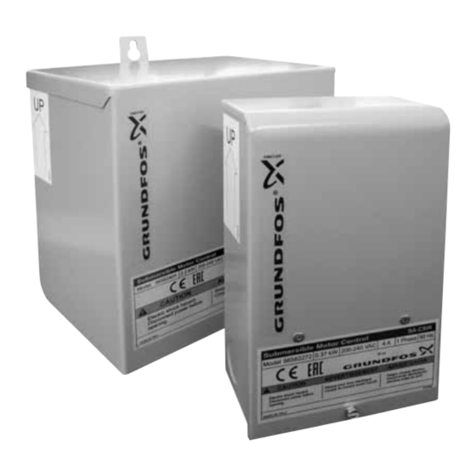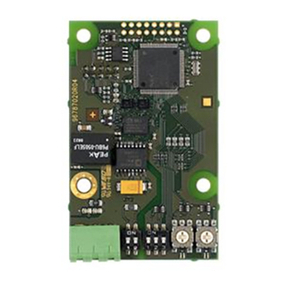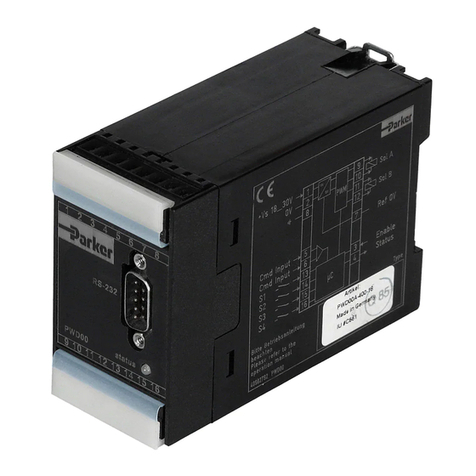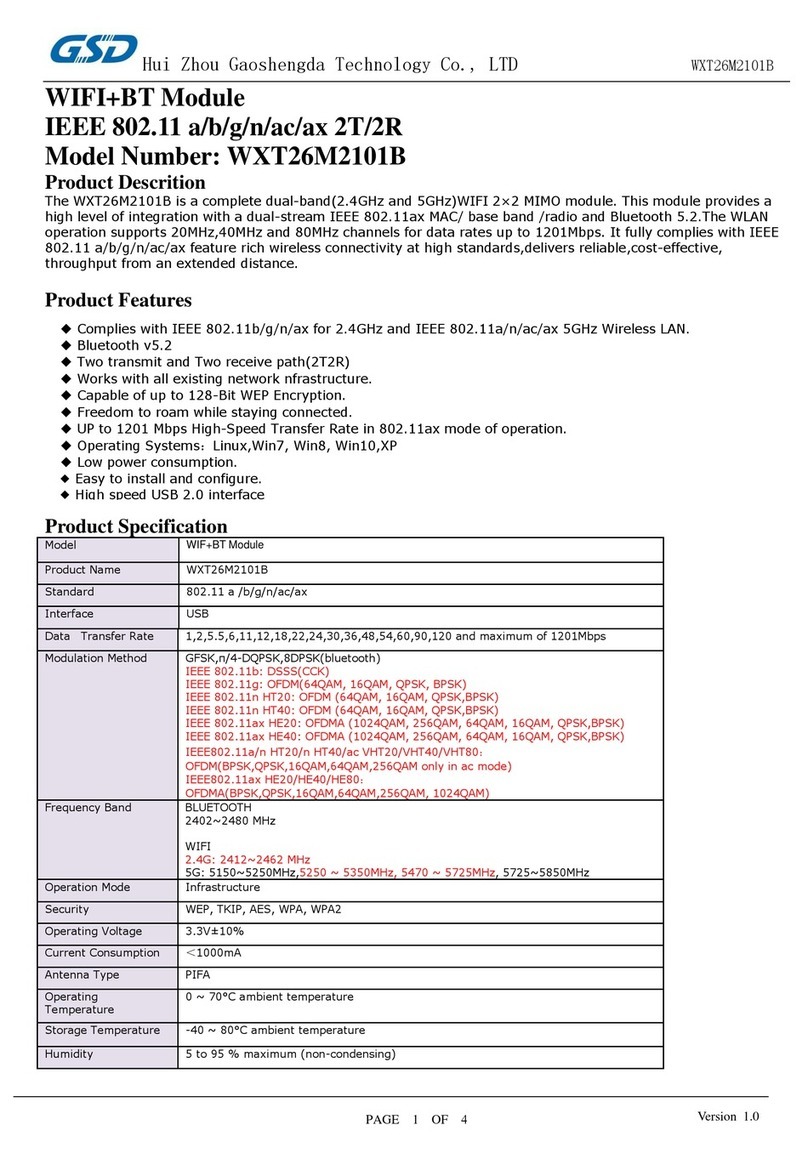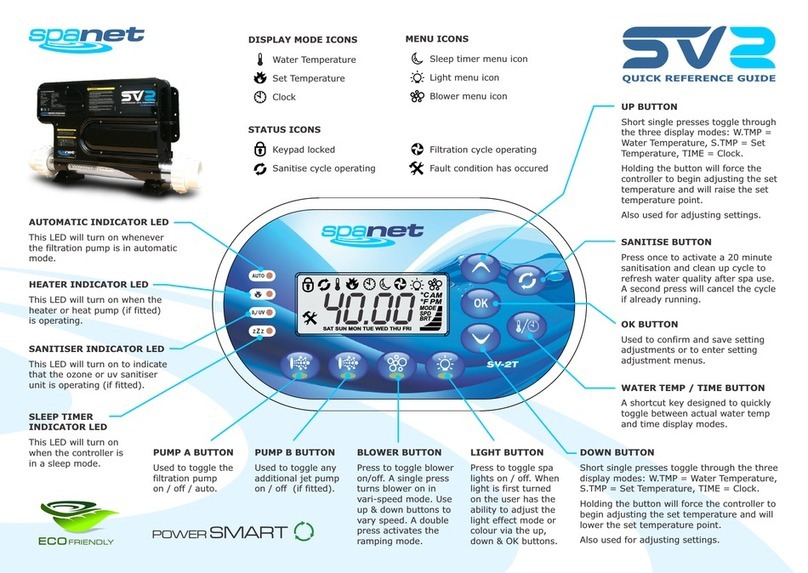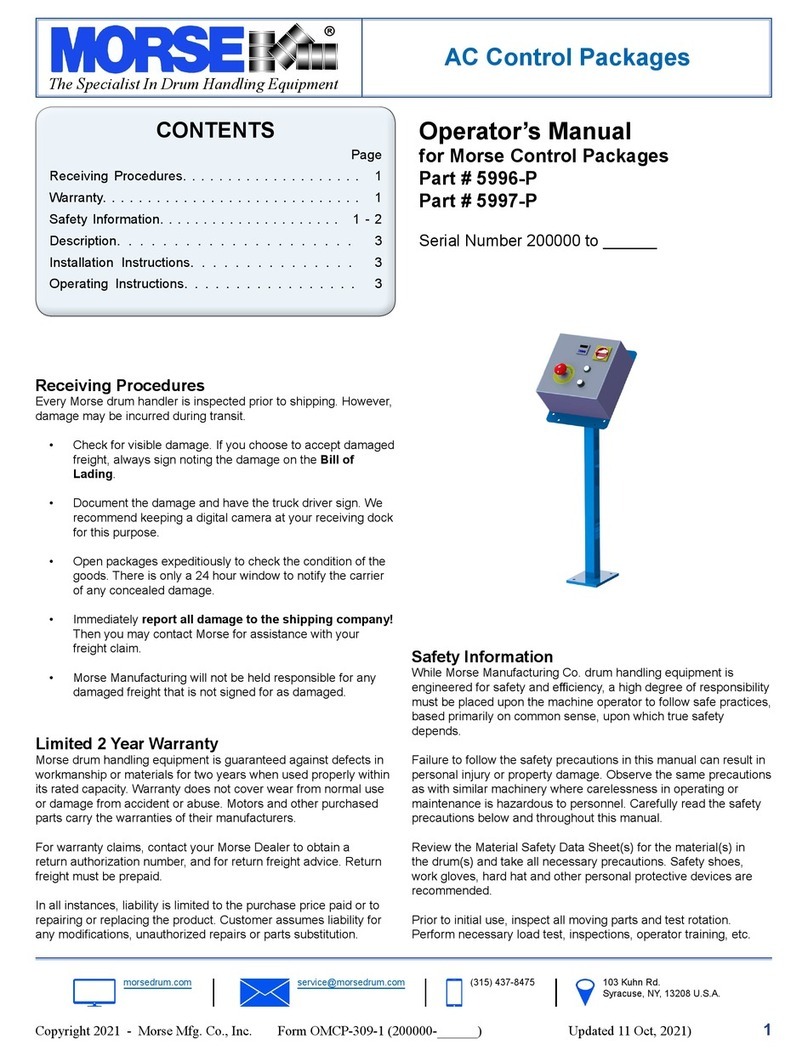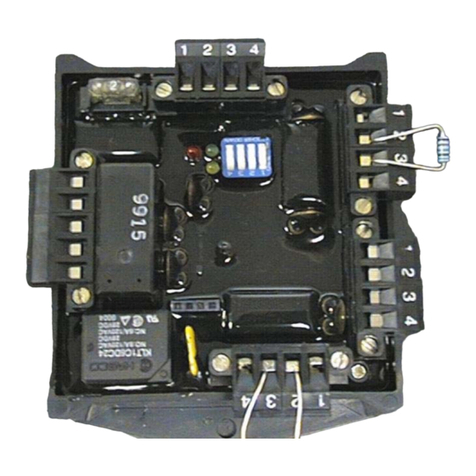Trina Solar TSM-DE21 User manual

Date: April 14, 2020 Doc No: PS-M-0871 Ver: B Page 1 of 21
USER MANUAL _166-cell Back Sheet-Glass Framed Module
USER MANUAL ................................................................................................................ 1
1. INTRODUCTION FOR USER MANUAL...................................................................... 2
1.1 DISCLAIMER ............................................................................................... 2
1.2 LIMITATION OF LIABILITY .......................................................................... 2
2. SAFETY PRECAUTIONS ........................................................................................... 2
2.1 WARING ....................................................................................................... 2
2.2 GENERAL SAFETY ..................................................................................... 2
2.3 HANDLING SAFETY .................................................................................... 2
3. UNLOAD/TRANSPROTATION/STORAGE ............................................................... 3
3.1 MAKERS ON OUTER PACKAGING ........................................................... 3
3.2 UNLOADING WARNNING ........................................................................... 4
3.3 SECONDARY TRANSPORT AND WARNNING ........................................ 5
3.4 STORAGE .................................................................................................... 6
4. UNPACKING INTRODUCTION ................................................................................. 7
4.1 UNPACKING SAFETY ................................................................................. 7
4.2 UNPACKING STEP ..................................................................................... 7
5. SITE SELECTION ...................................................................................................... 8
6. TILT ANGLE ............................................................................................................... 9
7. INSTALLATION ......................................................................................................... 9
7.1 INSTALLATION SAFETY ............................................................................. 9
7.2 INSTALLATION METHOD ......................................................................... 10
7.2.1 MECHINICAL INSTALLATION AND WARRING ....................................... 10
7.2.2 GROUNDING ............................................................................................. 15
7.2.3 ELECTRICAL INSTALLATION .................................................................. 17
8. INVERTER SELECTION AND COMPATIBILITY .................................................... 19
9. MODULE MAINTENANCE FOR PV MODULE PV .................................................. 19
9.1 PANEL VISION INSPECTION AND REPLACEMENT .............................. 19
9.2 CONNECTOR AND CABLE INSPECTION................................................. 19
9.3 CLEANNING .............................................................................................. 20
9.3.1 REQUIREMENTS FOR WATER QUALITY .............................................. 20
9.3.2 MODULE INSPECTION AFTER CLEANING ............................................ 20
9.3.3 TROUBLESHOOTING 40........................................................................... 21
10. REPORTING TECHNICAL ISSUES or CLAIMS ..................................................... 21

Date: April 14, 2020 Doc No: PS-M-0871 Ver: B Page 2 of 21
1. INTRODUCTION FOR USER MANUAL
This Manual applies to the installation, maintenance and use of the framed series solar modules
manufactured by TrinaSolar Ltd. (hereinafter referred to as “Trina Solar”). Failure to follow these
safety instructions could result in personal injury or property damage.
Installation and operation of solar modules require specialized skills, and only professional
personnel can engage in the work. Please read the “Safety and Installation Instructions” carefully
before using and operating the modules. The installer must inform the end customer (or consumer)
of the above matters accordingly.
The term “Module” or “PV Module” in this Manual refers to one or more framed series solar modules.
Please keep this Manual for future reference.
1.1 DISCLAIMER
Trina Solar reserves the rights to change this User Manual without prior notice. Failure of the
customer to follow the requirements outlined in this Manual during the installation of the module will
result in the invalidity of product's limited warranty.
1.2 LIMITATION OF LIABILITY
Trina Solar is not responsible for any form of damage, including but not limited to module operation
and system installation error, and personnel injury, hurt, and property loss resulted from failure to
follow the instructions in this Manual.
2. SAFETY PRECAUTIONS
2.1 WARNING
Before installing, wiring, operating, or maintaining Trina modules, you should read and understand
all safety precautions. Direct current (DC) is generated when the battery surface of the module is
exposed to direct sunlight or other light sources, and direct contact with the live parts of the module,
such as terminals, may result in death of personnel whether connected to the module or not .
2.2 GENERAL SAFETY
All installation work must comply with the local codes and the relevant international electrical
standards.
Trina recommends that PV module installation is conducted by personnel with experience in PV
system installation. Operation by personnel who are not familiar with the relevant safety procedures
will be very dangerous.
Do NOT allow unauthorized persons to access the installation area or module storage area.
Do NOT install modules with damaged glass or damaged backsheet .
Do NOT disassemble or move any part of the module.
Do NOT artificially focus light on the module.
Do NOT connect or disconnect the module when it is energized or connected with an external power
supply
2.3 HANDLING SAFETY
Do NOT stand, walk on or lean on the module directly.
Do NOT damage or scratch the front or backside surfaces of the module.
Do NOT scratch the output cable or bend it with force. The insulation of output cable can break and
may result in electricity leakage or shock.

Date: April 14, 2020 Doc No: PS-M-0871 Ver: B Page 3 of 21
Do NOT use water to extinguish fires of an electrical origin.
Do NOT install or handle modules when they are wet or during periods of high wind. At the
installation site, take care to keep modules and in particular their electrical contacts, clean and dry
before installation. If connector cables are left in damp conditions then the contacts may corrode.
Any module with corroded contacts should not be used.
Please do NOT loosen or unscrew the PV module bolts. This may lead to a reduction of the
module’s load rating and potential damage from a fall.
Do NOT drop PV modules or allow objects to fall down on the PV modules.
Do NOT touch the terminal box or the ends of the output cables (connectors) with bare hands under
sunlight, regardless of whether the PV module is connected to or disconnected from the system.
3. UNLOAD/TRANSPROTATION/STORAGE
Precautions and general safety rules:
The modules should be stored in the Trina original package before installation. Protect the
package from damage. Unpack the modules as per the recommended unpacking procedures.
The whole process of unpacking, transport and storing should be handled with care;
Do NOT stand, climb, walk or jump on unpacked pallets of modules;
Before installation, ensure that all modules and electrical contacts are clean and dry;
If the modules are required to be stored temporarily, they should be stored under dry and
ventilated conditions;
Unpacking must be carried out by two or more persons at the same time. It is forbidden to use
the wires or junction boxes of the modules to carry the modules. Handling the modules requires
two or more people with non-slip gloves; Do NOT handle the modules over-head or stack the
modules;
Do NOT put the modules in a place that is not supported or stable;
Do NOT allow the modules to come in contact with sharp-pointed objectives to prevent them
from scratches, avoiding a direct impact on the safety of modules.
3.1 MAKERS ON OUTER PACKAGING
3.1.1
Do NOT discard the modules at will; special
recycling is required
3.1.2
Modules must be kept dry, not expose to rain or
moisture
3.1.3
Modules in carton are fragile, which must be
handled with care
3.1.4
The packaging must be transported upright

Date: April 14, 2020 Doc No: PS-M-0871 Ver: B Page 4 of 21
3.1.5
Do NOT step on the package and module
3.1.6
The carton can be recycled
3.1.7
Modules shall be stacked as required, not
exceeding the maximum number of layers
printed on the outer packaging. ( n = 2 means no
more than two layers and n = 3 means no more
than three layers)
3.1.8
One module shall be handled by at least two
persons together
3.2 UNLOADING WARNING
3.2.1
Use the correct (as picture) lifting fixture to handle,
no more than 2 pallets per lift. Before lifting, please
confirm the tray and the carton are NOT damaged
and the hoisting rope is firm and solid. Before
lowering the carton back on the ground, two persons
must support the two sides of the carton gently to
put it on a relatively flat place.
3.2.2
If the condition permits, use a fork lift to remove
the module pallets from the truck
Put the modules on level ground

Date: April 14, 2020 Doc No: PS-M-0871 Ver: B Page 5 of 21
3.2.3
Store the module in a dry and ventilated place
3.2.4
Do Not stack the modules at the project site.
3.2.5
Cover the module with waterproof material to prevent it from moisture
3.3 SECONDARY TRANSPORT AND WARNNING
3.3.1 Do NOT remove the original packaging if
the modules require long-distance transport or
long-term storage.
3.3.2 The finished package can be transported by land,
sea or air. During transport, make sure that the package
is fixed with packing straps securely to the shipping
platform without movement.
3.3.3 Transport: Do Not Stack more than two
layers on truck;
3.3.4 Only one layer stacking is only allowed for small
truck. Make sure that the package is fixed with packing
straps securely to the shipping platform without
movement.

Date: April 14, 2020 Doc No: PS-M-0871 Ver: B Page 6 of 21
3.3.5 Only one layer stacking is only allowed
for transport at the project site
3.3.6 No transport or handling by pedi-cab as shown
below;
3.3.7 Do Not transport the module with rope as
shown below:
3.3.8 Do Not carry the modules on the back of
one person as shown below:
3.4 STORAGE
Do NOT expose the modules to rain or moisture. Store the finished product in a well ventilated,
waterproof and dry place.
Do NOT remove the original packaging if the module requires long-distance transport or long-term
storage.
3.4.1
Storage in project site warehouse (moisture<85%, temperature range from -20°C to + 50 °C):
120-cell frame module and 144-cell frame module to be stacked separately in two groups
3.4.2
Normal warehouse storage (moisture<85% and temperature range from -20°C to + 50 °C):
120-cell frame module and 144-cell frame module :stacking no more than two layers

Date: April 14, 2020 Doc No: PS-M-0871 Ver: B Page 7 of 21
4. UNPACKING INTRODUCTION
4.1 UNPACKING SAFETY :
For unpacking outdoors, it is prohibited to operate in rainy conditions. Because the carton will
become soft and damaged after it gets wet in the rain. The stacked PV modules (hereinafter
referred to as "modules") may tip over, which may cause damage or injury to personnel.
For a windy site, it is necessary to pay special attention to safety. Especially, it is NOT
recommended to transport the modules in high wind conditions. The unpacked modules must be
tied down to avoid any unwanted movement.
The work surface is required to be level to ensure that the package can be placed stably, avoiding
sliding.
Wear protective gloves during unpacking to avoid hand injury and fingerprints on the glass surface.
Module information and unpacking instructions can be found on the outside of each package.
Please read the instructions before unpacking.
Each module shall be handled by two persons. It is forbidden to use the wires or junction boxes
of the modules to carry the module. Do NOT take the module out of the carton by pulling on
the long side frame.
4.2 UNPACKING STEP :
4.2.1 Before unpacking, please check the product
name, serial number and related suggestions on the
A4 paper. Please read the unpacking instructions
carefully. NO other customized unpacking method is
allowed.
4.2.2 Cut the two packing belts at shorter
sides of the tray with blade or scissors, and
unpack the side surface of the carton along
the vertical direction.
4.2.3
Cut the tape at shorter edge and hold it up by 90°
from the bottom; and pull out the cardboard to
expose the modules.
4.2.4
Cut the two horizontal packing belts in the
carton and cut the two packing belts near
the bottom of the tray, and remove the
packing belts
Unpacking
instructions
A4 paper (product
name, serial
number, related
suggestions, etc.)

Date: April 14, 2020 Doc No: PS-M-0871 Ver: B Page 8 of 21
4.2.5
When unpacking on a level surface, take out the
module from one side of package to the other, and
then carry it with two persons (Please refer to 3.1.8)
When unpacking on a sloping surface, please protect
the modules from tipping over or sliding. As shown
below。
4.2.6
Do NOT lean the module on the mounting
posts;
4.2.7 If all the modules are NOT removed after unpacking and some of them are left in the
package, the remaining modules shall be laid flat and repackaged to prevent from falling down.
Must be placed by horizontal.
The stacked number of modules: 120-cell frame modules to be stacked NOT more than 20 pieces,
144-cell frame modules NOT more than 16 pieces;
5. SITE SELECTION
Solar modules are recommended to be installed at an optimized tilt angle to maximize the energy
output. It is roughly equal to the latitude of the project site as a rule of thumb, facing toward the
equator. Optimized system designs incorporate other local requirements.
When installing solar modules on a roof, the roof must be covered with a layer of fireproof material
applicable to this class, and adequate ventilation must be ensured between the back sheet and the
installation surface. A safe working area also must be left between the edge of the roof and the
external edge of the solar array
In the case of residential installations on the ground, modules shall be installed following local
regulations, e.g. using fence.
Position the modules to minimize the chances of shading at any time of the day.
Trina Solar recommends that the module should be installed at a working ambient temperature of -
20℃~50℃. The module's limit working ambient temperature range is from -40℃to 85℃. Maximum
altitude less than or equal to 2000m .The maximum mechanical load is 5400 on the front and 2400
on the back.
Try to install modules in a location where there is rare shading throughout the year
If you are planning to use the PV modules where the water damage (Humidity: >85RH%) may be
possible, please consult with Trina local technical support first to determine an appropriate
installation method , or to determine whether the installation is possible.
If the module is installed in an area with frequent lightning and thunder, the module must be
protected against lightning strikes. Refer to Trina Solar’s declaration document for lightning
protection. Please contact with local technical support or contact us from http://www.trinasolar.com/ .

Date: April 14, 2020 Doc No: PS-M-0871 Ver: B Page 9 of 21
Make sure flammable gases are NOT generated near the installation site.
According to Intertek-conducted IEC 61701, salt mist corrosion testing of photovoltaic (PV). The
module must not be soaked in the water or in the environment (i.e., fountain, spindrift, etc.) where the
module would touch water (pure water or brine) for a long term. If the modules are placed in an
environment of salt fog (i.e., marine environment) or sulfur (i.e., sulfur sources, volcanoes, etc.),
there is a risk of corrosion.
In locations that are 50m ~ 500mm from the ocean, stainless steel or aluminum materials must be
used to contact the PV modules, and the installation position must be processed with anti-corrosion
treatment; refer to the “Trina Solar Coastal Application White Paper”for detailed installation
requirements . Please contact with local technical support or contact us from
http://www.trinasolar.com/ .
6. TILT ANGLE
The tilt angle measurement of the PV module refers to measuring the angle between the module and
the horizontal ground surface. For different projects there are different mounting angles. Trina Solar
recommends that the mounting tilt angle should be NOT less than 10°, or in accordance with local
regulations or follow the recommendations of experienced PV module installers.
The tilt angle of the PV module is measured between the PV module and a horizontal ground
surface.
In the Northern Hemisphere, the PV modules should typically face south, and in the Southern
Hemisphere, the PV modules should typically face north.
A clearance of at least 115mm (4.5in) (recommended) is provided between modules frame and the
surface of the wall or roof. If other mounting means are employed this may affect the UL Listing or
the fire class ratings.
7. INSTALLATION
7.1 INSTALLATION SAFETY
Always wear dry insulation protection equipment: insulated tools, head gear, insulated gloves, safety
belt and safety shoes (with rubber soles).
Do NOT wear metallic jewelry which can cause electric shock during installation.
Do NOT install modules under rain, snow or windy conditions.
Please keep the connector dry and clean during installation to avoid the risk of electric shock. It is
recommended to install it immediately after unpacking.
Due to the risk of electrical shock, do NOT perform any work if the terminals of PV module are wet.
Please install immediately after you unpacking.
Our module application class is class A, modules rated for use in this application class may be used
in systems operating at greater than 50V DC or 320W, where general contact access is anticipated;
Keep the PV module packed in the Trina carton until installation.
Please use an opaque material to completely cover the PV module surface during PV module
installation and wiring.
Do NOT unplug the connector if the system circuit is connected to a load.
Do NOT stand on the module glass while installing. There is a risk of injury or electric shock if glass
is broken.
Do NOT work alone (always work as a team of 2 or more people).
Do NOT damage the back sheet of PV modules when fastening the PV modules to a support with
bolts.
Do NOT damage the surrounding PV modules or mounting structure when replacing a PV module.
Cables shall be located and secured so that they will not be exposed to direct sunlight after
installation to prevent degradation of cables. Low drooping of cables from the terminal box must be
avoided. Low hanging cables could cause various problems such as animal biting, electricity
leakage in water, and fire.

Date: April 14, 2020 Doc No: PS-M-0871 Ver: B Page 10 of 21
Modules with different color codes are not recommended to be installed in one block or the same
rooftop.
7.2 INSTALLATION METHOD
7.2.1 MECHANICAL INSTALLATION AND WARNING
The connection of the module to the racking system can be created through the mounting holes,
with clamps, or an embedded system on the frame. The modules must be installed according to
the following examples and recommendations. If a different installation method is desired, please
contact Trina Solar customer service or technical support team for consultation. Improperly
mounted modules maybe damaged. If alternative mounting method is used and not approved by
Trina, the modules will not continue to have a valid warranty.
The minimum distance between two modules is 10mm (0.4in).
Panels must not be subjected to wind or snow loads exceeding the maximum permissible loads,
and must not be subjected to excessive forces due to the thermal expansion of the support
structures.
The module frame drain holes cannot be blocked in any situation during installation or use.
*Notes :
The design loading of modules have been evaluated by TUV according to IEC61215 with 1.5
times safety factor;The mechanical load bearing is dependent upon the mounting methods used
and failure to follow the instructions of this manual may result in different capabilities to withstand
snow and wind loads;The system installer must ensure that the installation methods used meet
these requirements and any local codes and regulations.
The modules depicted are mounted on continuous rails that extend beneath the modules. If
modules are mounted without continuous rails below them, the maximum allowable loading will
be reduced and is subject to review by Trina.
A. Mounting with Bolts(4-φ9*14mm mounting holes)
Modules can be attached using the mounting holes on the back of the module frame, by fixing
the module to the support rails with bolts. The mounting details are shown in the following figures.
The frame of each module has 4-φ9*14mm mounting holes, ideally placed to optimize the load
handling capability, to secure the modules to the supporting structure. Installation holes of 4-
φ9*14 mm are used for routine installation, as shown in Figure 1 ,
To maximize mounting longevity, Trina Solar strongly recommends the use of corrosion proof
(stainless steel) attachment hardware.
Secure the module in each mounting location with an M8 bolt and flat washer, spring washer and
nut and tighten to a torque of 16~20 N.m(140-180lbf.in.).
All parts in contact with the modules should use flat stainless steel washers of minimum 1.5mm
thickness with an outer diameter of 20-24mm (0.79-0.94in).
Fig.1 Backsheet-Glass module

Date: April 14, 2020 Doc No: PS-M-0871 Ver: B Page 11 of 21
1) Aluminum Frame 2) M8 Stainless Bolt
3) Flat Stainless Washer 4) Spring Stainless Washer
5) HEX Stainless Nut
Module
Mechanical
Load Pressure
Safety
factor
Mounting Direction(The crossbeam is perpendicular to the long side
frame)
120 pcs
Back
sheet-
Glass
Framed
Module
+3600 Pa /-
1600Pa
1.5
*NOTE: The above-described distance is from the middle of the bolts to the
middle of the bolts
*NOTE: Need two support rails below the PV module to make sure the
Mechanical load.
*NOTE: The actual load is + 5400Pa/-2400Pa
144 pcs
Back
sheet-
Glass
Framed
Module
+3600 Pa /-
1600Pa
1.5
*NOTE: The above-described distance is from the middle of the bolts to the
middle of the bolts
*NOTE: Need two support rails below the PV module to make sure the
Mechanical load.
*NOTE: The actual load is + 5400Pa/-2400Pa
B. Mounting with Clamps
Trina Solar has tested its modules with a number of clamps from different manufacturers,
mounting bolt of at least M8. The length of clamp ≥40mm (1.57in) , thickness≥3mm(0.12in).
The clamp must overlap the module frame by at least 7mm (0.28in) but no more than 11mm
(0.43 in).
Use at minimum 4 clamps to attach modules to the mounting rails.
Modules clamps should not come into contact with the front glass and must not deform the
frame.
Be sure to avoid shadowing effects from the module clamps.
The module frame is not to be modified under any circumstances.
When choosing this type of clamp-mounting method, use at least four clamps on each module,
two clamps should be attached on each long sides of the module (for portrait orientation).
Depending on local wind and snow loads, additional clamps may be required to ensure that

Date: April 14, 2020 Doc No: PS-M-0871 Ver: B Page 12 of 21
modules can bear the load.
Applied torque should refer to mechanical design standard according to the bolt customer is
using, ex: M8 ---- 16-20N.m(140-180lbf.in)
End Clamp installation
Middle Clamp installation
Module
Mechanica
l Load
Pressure
Safety
factor
Mounting Direction (The crossbeam is perpendicular to the long side
frame)
120 pcs
Back sheet-
Glass
Framed
Module
+3600 Pa /-
1600Pa
1.5
*NOTE: The above-described distance is from the module edge to the middle
of the clamp
*NOTE: Need two support rails below the PV module to make sure the
Mechanical load.
*NOTE: The actual load is + 5400Pa/-2400Pa

Date: April 14, 2020 Doc No: PS-M-0871 Ver: B Page 13 of 21
144 pcs
Back sheet-
Glass
Framed
Module
+3600 Pa /-
1600 Pa
1.5
*NOTE: The above-described distance is from the module edge to the middle
of the clamp
*NOTE: Need two support rails below the PV module to make sure the
Mechanical load.
*NOTE: The actual load is + 5400Pa/-2400Pa
C. Mounting with Single-axis Tracking System(4-φ7*10mm mounting holes)
Modules can be attached using the mounting holes on the back of the module frame, by fixing
the module to the support rails with bolts. The mounting details are shown in the following figures.
The frame of each module has 4-φ7*10mm mounting holes, ideally placed to optimize the load
handling capability, to secure the modules to supporting structure. 4 installation holes of φ7*10
mm are used for Single-axis tracking system installation, as shown in Figure 2
To maximize mounting longevity, Trina Solar strongly recommends the use of corrosion proof
(stainless steel) attachment hardware.
Secure the module in each mounting location with an M6 bolt and a flat washer, spring washer
and nut.
If a different bolt similar to M6 is used, they need to be tightened to a torque of 16N.m.(140lbf.in).
Flat stainless steel gaskets with a minimum thickness of 1.5mm and an external diameter of 16-
20mm (0.63-0.79 inches) shall be used in all parts of the components connected to the Single-
axis tracking system.
Mechanical Load Pressure under this method: 30 lbs.ft2max from the front side & 30 lbs.ft2max
from the rear according to UL1703.

Date: April 14, 2020 Doc No: PS-M-0871 Ver: B Page 14 of 21
Fig 2. Backsheet-Glass module with Single-axis Tracing System
1) M6 hex bolt M6 2) flat stainless washer
3) spring stainless washer 4) hex stainless nut
Module
Mechanical Load
Pressure
Safety factor
Mounting Direction
144 pcs Back sheet-
Glass Framed
Module
+1600 Pa /-1600 Pa
1.5
*NOTE: The above-described distance is
from the middle of the bolts to the middle
of the bolts
*NOTE: The actual load is + 2400Pa/-
2400Pa
D. 2V Installation Method
The single module is installed with two φ7*10mm mounting holes and two φ9*14mm mounting
holes, as shown in figure 3. The overall installation method is shown in the table below.

Date: April 14, 2020 Doc No: PS-M-0871 Ver: B Page 15 of 21
Figure: Mounting holes schematic of the single module for the 2V installation method
Module
Mechanical
Load Pressure
Safety
factor
Mounting Direction
144 pcs
Backsheet-
Glass
+700 Pa /-700
Pa(Special
Requirement,
need confirm
with Trina)
1.5
*NOTE: Installation hole marked 900 mm pitch is the
installation hole of this installation mode.
*NOTE: The above-described distance is from the middle
of the bolts to the middle of the bolts
The actual load is + 1050Pa/-1050Pa
7.2.2 GROUNDING
All module frames and mounting racks must be properly grounded in accordance with
appropriate respective National Electrical Code.
Proper grounding is achieved by bonding the module frame(s) and all metallic structural
members together continuously using a suitable grounding conductor. The grounding conductor
or strap may be copper, copper alloy, or any other material acceptable for use as an electrical
conductor per respective National Electrical Codes. The grounding conductor must then make a
connection to earth using a suitable earth ground electrode.
Trina Solar modules can be installed with the use of third party listed grounding devices for
grounding the metallic frames of PV modules. The devices have to be installed in accordance
with the grounding device manufacturer’s specified instructions.
Please refer to the “Product Catalogue” link for detailed grounding hole locations and size at
http://www.trinasolar.com/
Grounding hardware comes in a package that includes the grounding screw, flat washer、star

Date: April 14, 2020 Doc No: PS-M-0871 Ver: B Page 16 of 21
washer and wire
Electrical contact is made by penetrating the anodized coating of the aluminum frame, and
tightening the mounting screw (come with the star washer) to the proper torque of 25lbf.in.
Grounding wire size (6 to 12 AWG solid bare copper) should be selected and installed
underneath the wire binding bolt.
Star washer, flat washer, grounding wire are
placed in turn, then screwed into the grounding
hole to bond the adjacent modules
Trina recommends using the following methods to ground modules properly under UL
investigation
Method 1: Tyco grounding bolt # 2058729-1:
Figure 4. Tyco grounding bolt # 2058729-1
1) Wire bolt and slot 2) Mounting wash hex nut 3) Aluminum frame 4) 0.006 to 0.025in2 cable 5) Hex Nut
Tyco grounding hardware comes in a package that includes the grounding bolt, mounting and
grounding hex nut.
Electrical contact is made by penetrating the anodized coating of the aluminum frame, and
tightening the mounting hex nut (come with the star washer) to the proper torque of 25lbf.in.
Grounding wire size (6 to 12 AWG solid bare copper) should be selected and installed
underneath the wire binding bolt.
The wire binding bolt should be tightened to the proper torque of 45lbf.in.
Method 2: Tyco grounding bolt #1954381-2:
Figure 5. Tyco grounding bolt # 1954381-2 (NOT applicable for TRINAMOUNT module
series)
1) Wire slot (available for 0.006 to 0.025in2cable) 2) Slider 3) Bolt 4) Base 5) Nut

Date: April 14, 2020 Doc No: PS-M-0871 Ver: B Page 17 of 21
Tyco grounding hardware comes in a package that includes the grounding bolt, mounting and
grounding hex nut.
Electrical contact is made by penetrating the anodized coating of the aluminum frame, and
tightening the mounting hex nut (come with the star washer) to the proper torque of 25lbf.in.
Grounding wire size (6 to 12 AWG solid bare copper) should be selected and installed
underneath the wire binding bolt.
The wire binding bolt should be tightened to the proper torque of 45lbf.in.
The Tyco grounding bolt is only listed for use with 6 to 12 AWG bare solid copper wire.
Method 3: ERICO grounding bolt # EL6CS14-6
Figure 6. ERICO grounding bolt # EL6CS14-6 (NOT applicable for the TRINAMOUNT module
series)
1) Machine Bolt A 2) Machine Bolt B 3) Belleville washer 4) Flat Washer
5) Clearance hole for #10[M5] machine bolt 6) Aluminum frame
7) Machine box hex nut with lock washer 8) Grounding bolt
The lug should be installed on a surface that is larger than the bottom surface of the lug.
The lug should be installed in the grounding holes provided on the PV module.
Machine bolt A should be torqued to 35lbf.in, to secure the grounding bolt to module frame.
The grounding bolt is only listed for use with 6-12 AWG bare solid copper wire.
For proper wire binding, machine bolt B should be torqued to 35lbf.in.
7.2.3 ELECTRICAL INSTALLATION
All wiring should be performed, by qualified installers, in accordance with the local codes and
regulations.
Modules can be connected in series to increase the operating voltage by plugging the positive
plug of one module into the negative socket of the next. Before connecting modules always
ensure that the contacts are corrosion free, clean and dry.
Product can be irreparably damaged if an array string is connected in reverse polarity to
another. Always verify the voltage and polarity of each individual string before making a parallel
connection. If you measure a reversed polarity or a difference of more than 10V between
strings then check the string configuration before making the connection.
Trina Solar modules are provided with stranded copper cables with a cross sectional area of
4mm²(0.006in²) which are UV resistant. All other cables used to connect the DC system should
have a similar (or better) specification. Trina Solar recommends that all cables are run in
appropriate conduits and sited away from areas prone to water collection.
The maximum voltage of the system must be less than the maximum certified voltage and the
maximum input voltage of the inverter and of the other electrical devices installed in the system.
To ensure that this is the case, the open circuit voltage of the array string needs to be

Date: April 14, 2020 Doc No: PS-M-0871 Ver: B Page 18 of 21
calculated at the lowest expected ambient temperature for the location. This can be done using
the following formula.
Max System voltage ≥ N * Voc * [1 + TCvoc x (Tmin-25)]
Where
N Number of modules in series
Voc Open circuit voltage of each module (refer to product label or data sheet)
TCvoc Thermal coefficient of open circuit voltage for the module (refer to data sheet)
Tmin The lowest expected operating temperature of module
Each module has two standards 90°C sunlight resistant output cables each terminated with
plug & play connectors. The PV Wire cables are 12AWG in size. This cable is suitable for
applications where wiring is exposed to the direct sunlight. We require that all wiring and
electrical connections comply with the appropriate National Electrical Code.
The minimum and maximum outer diameters of the cable are 5 to 7mm (0. 038 to 0.076in2).
For field connections, use at least 4mm2 copper wires insulated for a minimum of 90°C and
sunlight resistance with insulation designated as PV Wire.
The minimum bending radius cables should be 43mm (1.69in).
7.2.3.1 WIRING
To ensure proper system operation the correct cable connection polarity (Figures 1 & 2) should
be observed when connecting the modules to each other or to a load, such as inverter, a
battery etc. If modules were not connected correctly, the bypass diode could be destroyed. PV
modules can be wired in series to increase voltage. A series connection is made when the wire
from the positive terminal of one module is connected to the negative terminal of the next
module. Figure 1 shows modules connected in series. PV modules can be connected in parallel
to increase current (Figure 2). A parallel connection is made when the wire from the positive
terminal of one module is connected to the positive terminal on the next module.
The number of modules in series and in parallel shall be designed reasonably according to the
system configuration.
All instructions above have to be obeyed to maintain Trina Solar’s limited warranty.
Connecting in series
Figure 1
Connecting in parallel after connected in series
Figure 2
7.2.3.2 FUSING
When fuses are fitted they should be rated for the maximum DC voltage and connected in each,
non-grounded pole of the array (i.e. if the system is not grounded then fuses should be
connected in both the positive and negative poles).
The maximum rating of a fuse connected in series with an array string is typically 20A but the
actual module specific rating can be found on the product label and in the product datasheet.
This fuse rating value also corresponds to the maximum reverse current that a module can
withstand (when one string is shaded then the other parallel strings of modules will be loaded
by the shaded string and current will flow) and therefore impacts the number of strings in
parallel.

Date: April 14, 2020 Doc No: PS-M-0871 Ver: B Page 19 of 21
Do NOT share a fuse in a Combiner Box with two or more strings in parallel connection.
8. INVERTER SELECTION AND COMPATIBILITY
When installed in systems governed by IEC regulations, Trina Solar modules normally do not
need to be electronically connected to earth and therefore can be operated together with either
galvanically isolated (with transformer) and transformerless inverters.
Choose inverters with isolation transformers in hot and wet areas (such as shores, wetlands), to
ensure proper module function under positive voltage.
9. MODULE MAINTENANCE FOR PV MODULE PV
9.1 PANEL VISUAL INSPECTION AND REPLACEMENT
The modules in a PV array should be regularly checked for damage. Factors such as glass
breakage, cable breakage, and junction box damage may lead to function and safety problems.
In the case of a damaged module, replace it with the same type of module. Refer to the
appropriate Product Installation Manual for installation and dis-assembly of module.
It is recommended to perform a preventive inspection every six months without changing the
components of the module. If electrical or mechanical appliances are used for inspection or
maintenance, they should be operated by qualified professionals to avoid any electric shock or
loss of life
Trim any vegetation which may shade the solar array, thus impacting performance.
Check that mounting hardware is properly tightened.
Check that all string fuses in each non/earthed pole are operating.
Replacement modules must be of same type. Do NOT touch live parts of cables and
connectors. Use appropriate safety equipment (insulated tools, insulating gloves, etc.) when
handling modules.
Cover the front surface of modules by an opaque material when repairing. Modules when
exposed to sunlight generate high voltage and are dangerous.
Trina Solar PV modules are equipped with bypass diodes in the junction box. This minimizes
module heating and current losses.
oDo NOT open the junction box to change the diodes even if they malfunction.
oIn a system using a battery, blocking diodes are typically placed between the battery and
the PV module output to prevent battery discharge at night.
In the event that a module is damaged (broken glass or a scratch on back sheet) and needs to
be replaced
oObserve the safety precautions listed earlier in this Manual
oWear cut resistant gloves and other personal protective equipment required for the
particular installation.
oIsolate the impacted array string to prevent current flow before attempting to remove the
module.
oDisconnect the connectors of the affected module using the related disconnect tool provided
by suppliers.
oReplace the damaged module with a new functional module of the same type.
oCheck the open circuit voltage of the array string and verify that this is within 10V of the
other strings to be connected in parallel.
oTurn the breaker back on.
9.2 CONNECTOR AND CABLE INSPECTION
Inspect all cables to verify that connections are tight; the cables are protected from direct
sunlight and sited away from areas of water collection.
It is recommended to check the torque of terminal bolts and the general condition of wiring at

Date: April 14, 2020 Doc No: PS-M-0871 Ver: B Page 20 of 21
least once a year. Also, check that mounting hardware is properly torqued. Loose connections
will result in damage to the array.
9.3 CLEANING
The amount of electricity generated by a solar module is proportional to the amount of light
falling on it. A module with shaded cells will produce less energy and therefore it is important to
keep all PV modules clean.
Clean PV modules when the irradiance is below 200W/m2; liquid with a large temperature
difference from the modules must not be used for cleaning the modules;
It is forbidden to clean PV modules under the weather conditions of wind more than 4 grades,
heavy rain or heavy snow;
When cleaning with pressurized water, the water pressure on the glass surface of the module
must not exceed 700 KPa (14619.80psf); the module must Not bear the extra force;
When cleaning PV modules, do NOT step on the modules; do NOT spay water on the backside
of the module or the cables; keep the connectors clean and dry; prevent fire and electrical
shock from occurring; do NOT use as steam cleaner;
The back surface of the module normally does not need to be cleaned but, in the event this is
deemed necessary, avoid the use of any sharp projects that might damage the penetrating the
substrate material.
Periodically trim any vegetation which may shade the solar array thus impacting performance.
When cleaning the modules, use a soft cloth together with a mild detergent and clean water.
Take care to avoid severe thermal shocks which might damage the module by cleaning
modules with water which has a similar temperature to the modules being cleaned.
Use dry or wet soft clean cloth to clean the PV modules; non-corrosive solvents or hard objects
are strictly prohibited;
If there is greasy dirt and other substances on the surface of the PV module which are difficult
to clean, conventional household glass cleaning agents can be used; Do NOT use the alkaline
and strong acid solvents.
When cleaning the back surface of the module, take care to avoid penetrating the substrate
material. Modules that are mounted flat (0°tilt angle) should be cleaned more often, as they will
NOT ''self-clean'' as effectively as modules mounted at a 10°tilt or greater.
If you are unsure whether the array or section there of needs to be cleaned, first select an array
string that is particularly soiled, then
Measure & record the inverter feed in current from that string
oClean all modules in the string
oMeasure the inverter feed in current again and calculate the % improvement from cleaning
9.3.1 REQUIREMENTS FOR WATER QUALITY
PH: 5 ~7;
Chloride and Salinity:0 - 3,000 mg/L
Turbidity:0-30 NTU
Conductivity:1500~3000 μs/cm
Total dissolved solids (TDS):≤1000 mg/L
Water Hardness—calcium and magnesium ions:0-40 mg/L
Non-alkaline water must be used; demineralized water shall be used if the condition permits.
9.3.2 MODULE INSPECTION AFTER CLEANING
Ensure that the module under visual inspection is clean, bright and free of stains;
Spot check to verify whether there is soot deposit on the module surface;
Table of contents
Other Trina Solar Control Unit manuals
